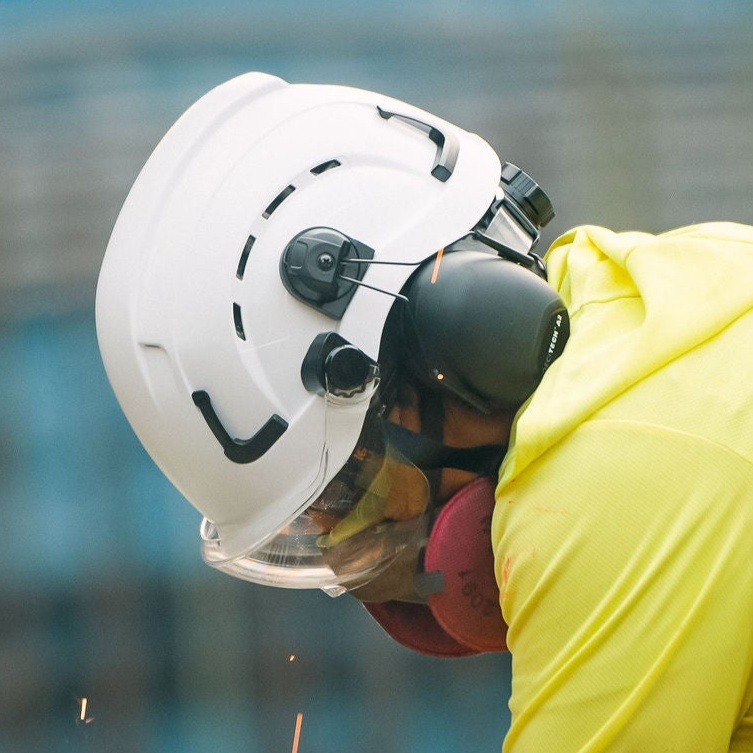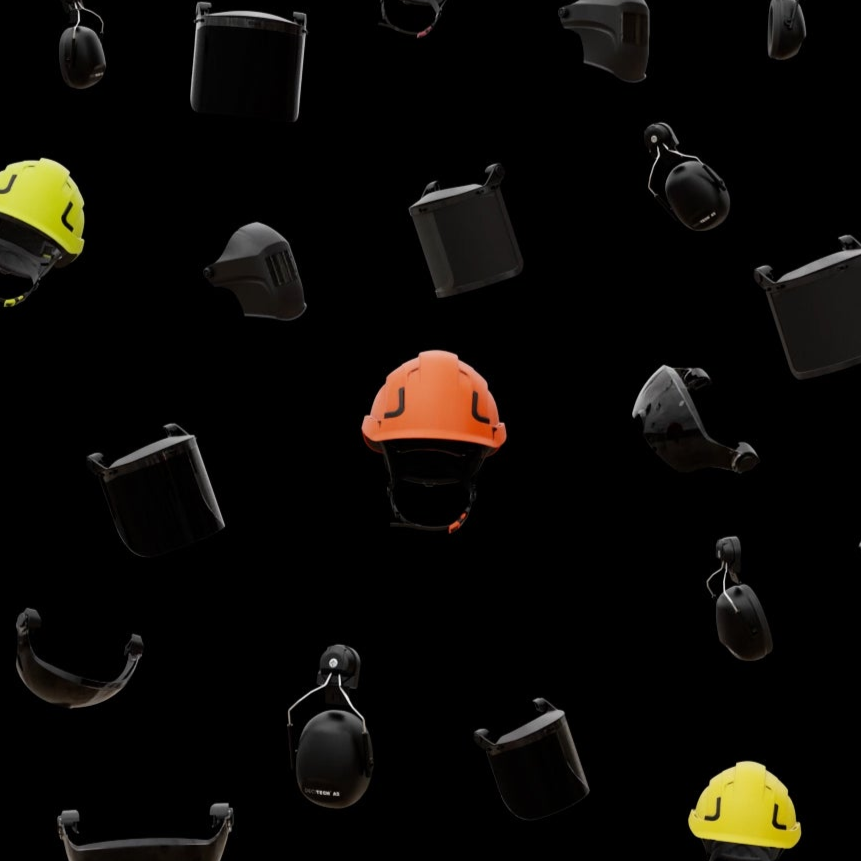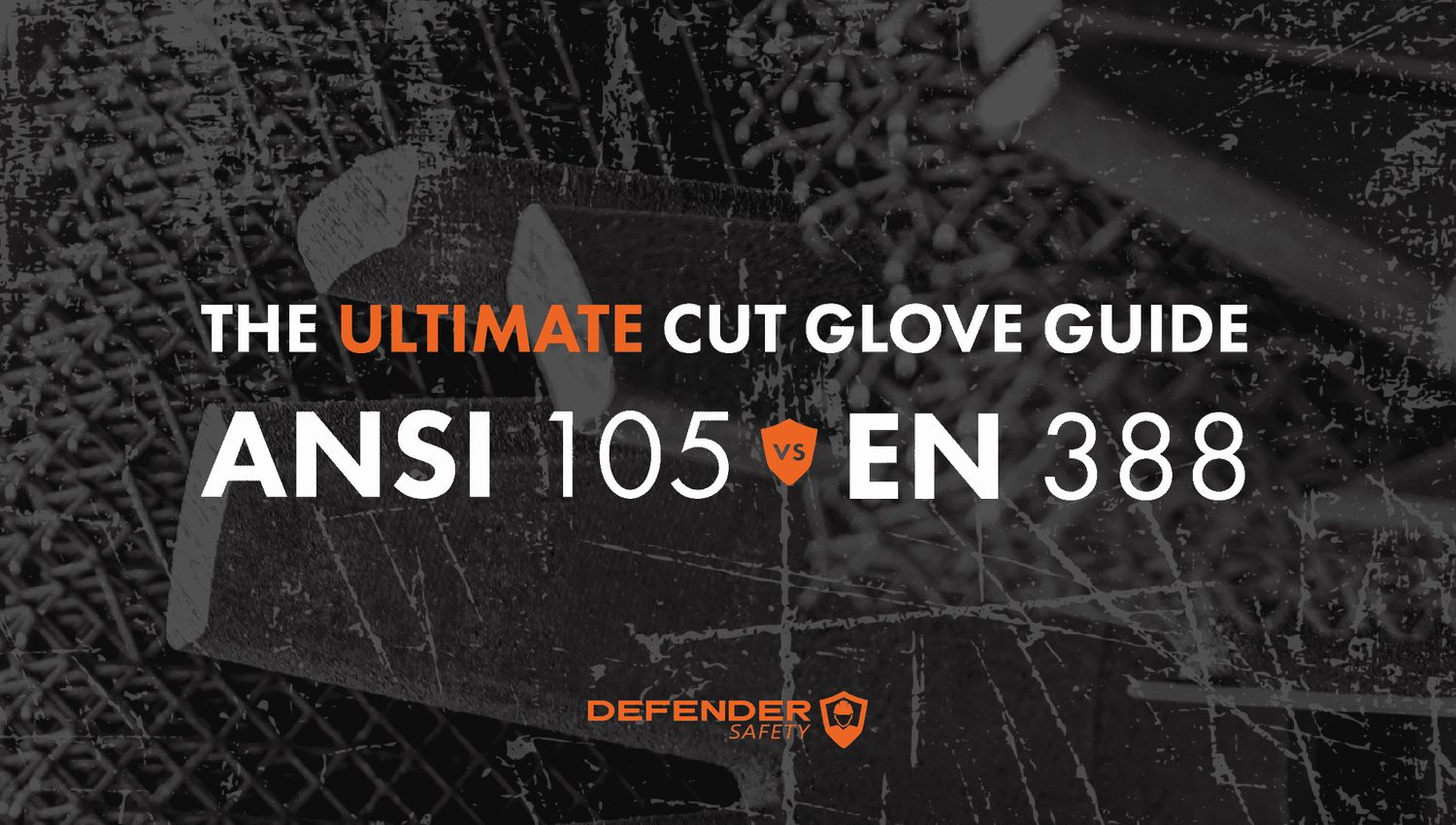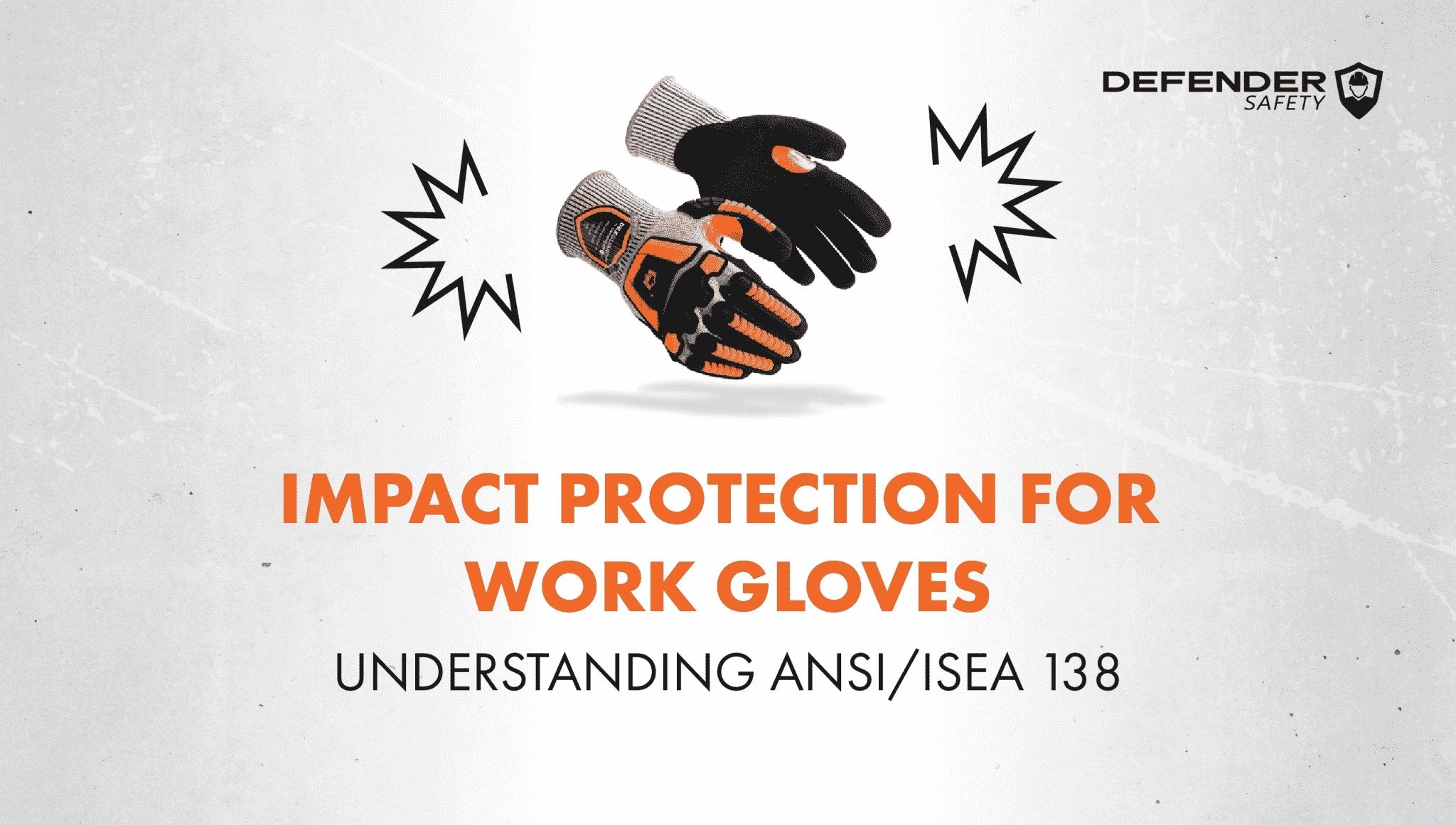Introduction
According to the latest data from the Bureau of Labor Statistics, every year roughly one million workers are victims of occupational hand injuries that force them to seek emergency medical help. Moreover, nearly 110,000 hand injuries requiring time away from work are reported annually. Lacerations are the most common form accounting for approximately 63% of all hand-related damage. Crushes come in second with 13% of reported hand injuries. Avulsions, punctures, and fractures account for about 20% of reported injuries. Most often, an injured hand at work is caused by human error. One of the easiest ways to protect a user from hand injury is using proper PPE, but with a variety of cut levels and different standards, it can be confusing to understand which gloves are best for your job. This blogpost deep dives into the most popular two standards for cut resistance; ANSI 105 and EN 388. We will explore what they are, and how they test gloves. At the end of the post each standard will be compared to help you understand which gloves you need for your specific job.
ANSI 105-2016: What is it?
ANSI 105 sets requirements for protective gloves used at work to prevent lacerations and cuts. In this standard, the American National Standards Institute (ANSI) compares the cut resistance of different gloves. ASTM F2992-15 is the test method used by ANSI 105 to measure gloves' cut resistance. A straight blade is used under controlled conditions to cut through a sample of material. Cut resistance levels are assigned to gloves based on the results of the test, ranging from A1 to A9. The cut resistance level of gloves meeting the ANSI 105 standard will be indicated on the glove label. Employers and workers can use this information to select gloves that provide the appropriate level of cut protection in a particular workplace.
How are gloves tested for ANSI 105-2016? “ASTM F2992-15” is the standard used to determine cut resistance. A straight blade is used to measure cut resistance on a 20 millimeter distance during testing. Once tested, the gloves are rated between cut levels A1 to A9 and are represented in grams. This scale allows for testing higher cut resistant materials and to more accurately categorize them for results up to 6000 grams.
How to select the right ANSI Cut Glove for your task
It can be confusing to understand which
cut gloves are best for you. Most users unfortunately assume that higher cut level is best, but there are other factors to consider such as dexterity, grip, and abrasion resistance. The most important factor to keep in mind is to know which environment the gloves will be used. The table below presents the ideal use case for each cut level.
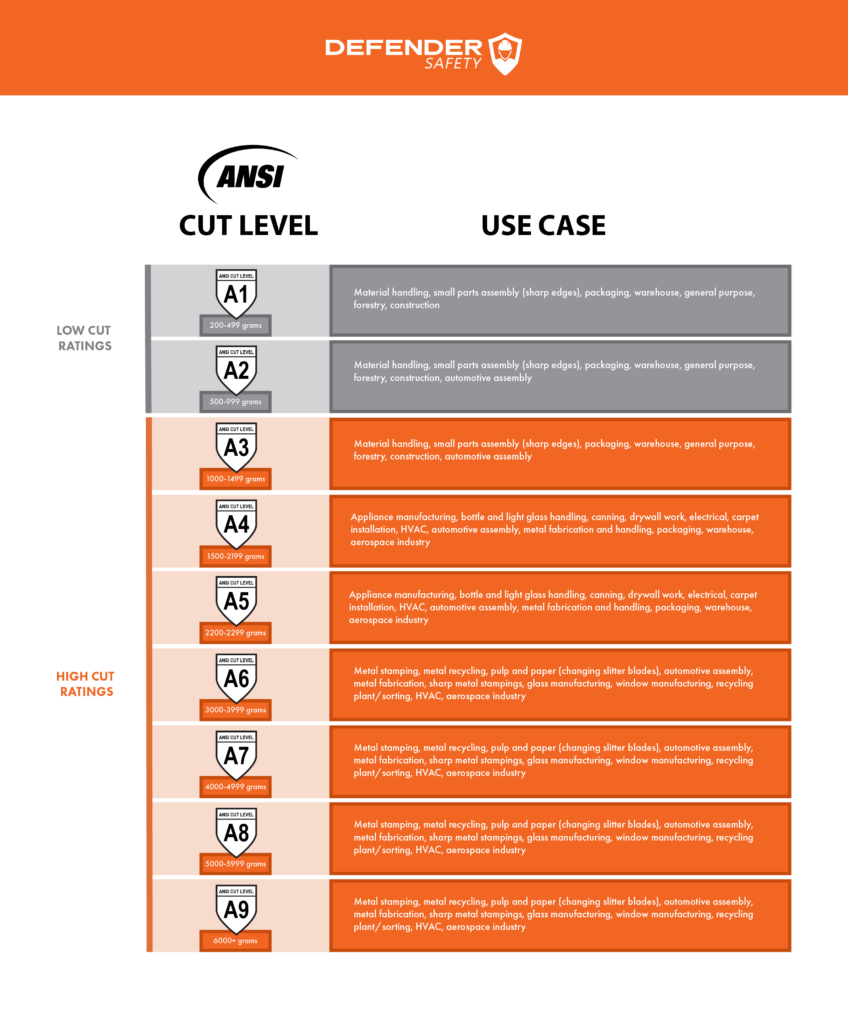
EN388-2016 : What is it?
EN 388 is a European standard used to evaluate hand protection. Gloves with a EN 388 rating are third party tested. Unlike ANSI 105, EN Cut resistance is rated 1-5, while all other physical performance factors are rated 1-4. The EN 388-2016 standard uses both the “Coup Test” and the “TDM-100 Test” to measure cut resistance for a more accurate score as opposed to just the Coupe test.
How are gloves tested for EN 388
As discussed above, the EN 388 2016 uses both the “Coup Test” and the “TDM-100 Test” to measure cut resistance. ISO 13997, also known as the “TDM-100 Test” is similar to the ASTM F2992-15 test method used in the ANSI 105 standard.
How to select the right EN Cut Glove for your task
EN rated gloves display their cut levels on the back of the gloves. The diagram below explains how EN gloves are rated and their applications
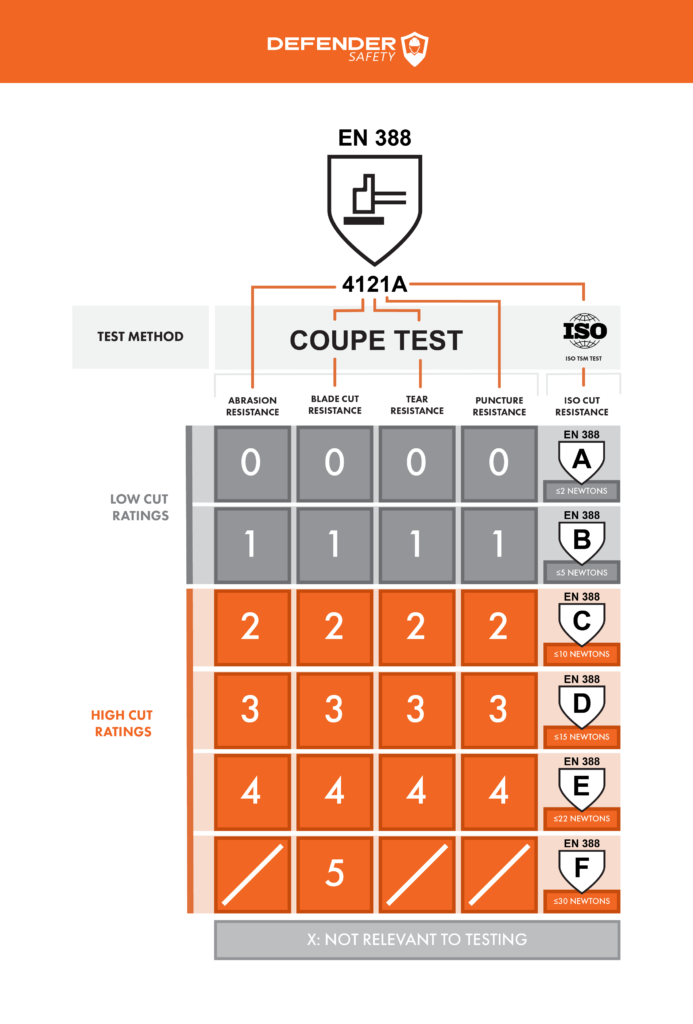
What is the difference between ANSI 105 and EN 388
ANSI 105 is the standard used for the North American market, whereas the EN388 is used in the European market. ANSI 105 uses the Tomodynamometer (TDM-100) as the definitive machine for testing cut resistance in North America for the sake of simplicity. The steps for measuring cut resistance using the TDM-100:
- The glove sample is placed on a conductive strip and loaded onto the TDM-100.
- A straight blade is loaded onto the machine.
- Weight is added to serve as force.
- The blade moves across the fabric.
- The blade is replaced with a new one to ensure accuracy.
- The sample is cut five times, each with three different loads.
- The distance traveled to cause cut through at various forces is recorded.
- When the razor blade touches the metal conductive strip, the test is terminated.
- An average is calculated for the grams to cut
EN 388 initially used the Coup Test as the preferred machine for measuring cut resistance, but in 2016 the TDM-100 would become the cut testing machine of choice in Europe. This was to ensure consistency between different standards. However for a product to legally be sold in Europe, it has to be CE certified. The CE certification rules were not updated to reflect the European cut standards amendment. This means that even though the TDM-100 has become the testing machine of choice, if a manufacturer wants to sell their cut-resistant glove in Europe, they must have tested and certified on the Coup Test machine. The most common complaint about the Coup Test was that the blade would dull during the test, especially over highly-engineered yarns. The 2016 revision has the same test procedure as the ANSI/ISEA 105 standard except for one notable exception. The glove will be rated in Newtons of force rather than grams of force to measure cut through.
Which test method is better?
Prior to ISO 13997 inclusion for EN 388; ANSI/ISEA 105 was the standard preferred in the industry because of its accuracy. However, now that the EN 388 standard uses the TDM-100 for part of its testing, both standards have their benefits. Some users may lean towards ANSI standard because of its simplicity and reduced the risk of error during testing. The Chart below shows a comparison of ANSI 105 and EN 388

Conclusion
Regardless of the test you are using, it’s critical to remember that although ANSI and EN 388 are similar, they are not equivalent. A glove that withstood 3059 grams of cut force on the Coupe Test (CE cut level 5) will not automatically be an ANSI level A6. The glove must be tested using a TDM-100 to determine this, and vice versa. It is also important to remember that when choosing the right gloves, higher cut protection does not always equal the better glove for the task at hand. Other factors such as abrasion, dexterity, or thermal lining can play a key role to getting the task done effectively. Defender Safety’s
Dexguard line is the ideal choice when choosing your cut-rated glove. They are eco-friendly, high quality and come in a wide range of cut levels to give you the protection you need for the task at hand. To learn more about the cut-gloves line click on the link below:











